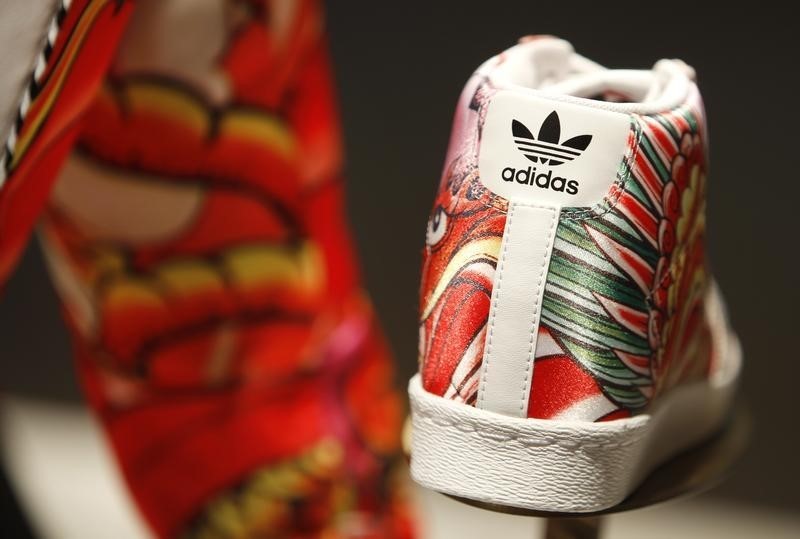By Emma Thomasson
FUERTH, Germany (Reuters) - Battling new competition from fashion chains as well as traditional sportswear rivals, Adidas (DE:ADSGn) is eyeing the "fast fashion" model as a way of pepping up its three-striped ranges of tops, leggings and sneakers.
That means producing more items closer to its main markets, just as fashion chain Zara quickly turns out new designs from factories in Spain, but the German group sees the benefits outweighing any cost increases.
Sportswear makers traditionally operate on a seasonal business model, designing two main collections a year to 18 months before they hit the shelves.
But Adidas, which has lagged Nike (N:NKE) in recent years in its ability to set trends, wants to shift towards fast fashion as pioneered by Inditex 's (MC:ITX) Zara, which delivers new styles to its stores twice a week.
"In the athletic industry, no-one is fast at what they are doing, so there is an opportunity to gain a competitive advantage by being faster at what we do," Glenn Bennett, head of global operations for Adidas, told Reuters in an interview.
"We're not out there to compete with the likes of H&M (ST:HMb) and Zara in the pure sense, but if they are going to dig into our territory ... we are going to dig into that territory with what we have to offer."
As running tights and sneakers move from track to catwalk, chains like H&M and Gap (N:GPS) have launched their own sportswear lines, just as Adidas and Puma (DE:PUMG) push into casual streetwear.
Adidas has been using teen label NEO, only five years old but targeting sales of 1 billion euros (£722.1 million) in 2015, to test the new approach, both by delivering a stream of fresh styles and responding to demand by restocking top sellers.
MORE PROFITABLE
NEO can get new products into stores within 45 days as it sources more items closer to its main markets in Europe and North America rather than in Asia. Adidas is also speeding up processes in Asian factories and increasing automation.
When it saw early signs that a colourful sneaker called NEO Groove was selling well, the company quickly ordered more shoes which arrived in stores within weeks.
Bennett said this kind of fast fashion sells three times more quickly than seasonal products, making it more profitable.
"You can imagine if they are buying it three times faster we are not discounting ... They are buying it at full price," he said. "A 20 percent improvement of full-price sales could add tens of millions to the bottom line."
Such an improvement could be vital given criticism from shareholders of Adidas's efforts to far to catch market leader Nike.
As part of a strategy launched in March, Adidas said it wants half of its ranges to be produced on the fast fashion model by 2020 as it seeks to lift its operating margin above 10 percent, still behind the 13 percent Nike recorded last year and the around 17 percent enjoyed by H&M and Inditex.
Bennett said speeding up clothing delivery was relatively easy as garment factories are already spread around the world, including in Turkey and eastern Europe which could service western Europe. But moving footwear production away from Asia was harder as plants cost more.

"The breakthrough will probably happen in finishing the product close to the consumer," he said. "Not moving the whole of the operation".